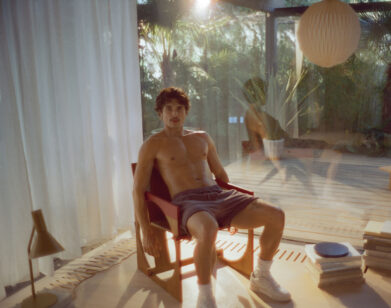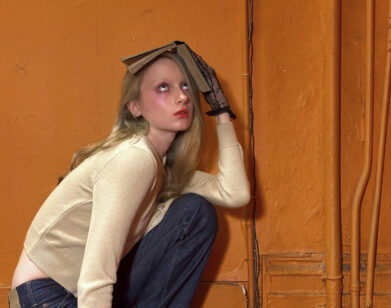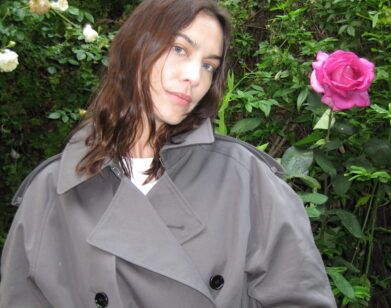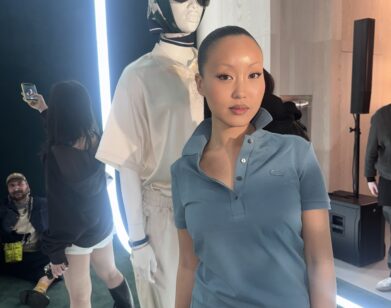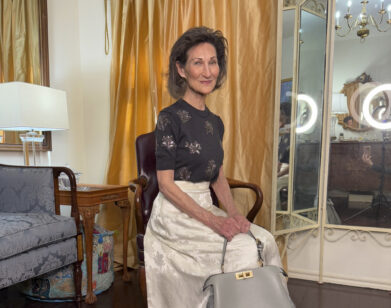Fashion!
KNWLS Is Bringing Back the Pussy Hat for Fall/Winter ‘22
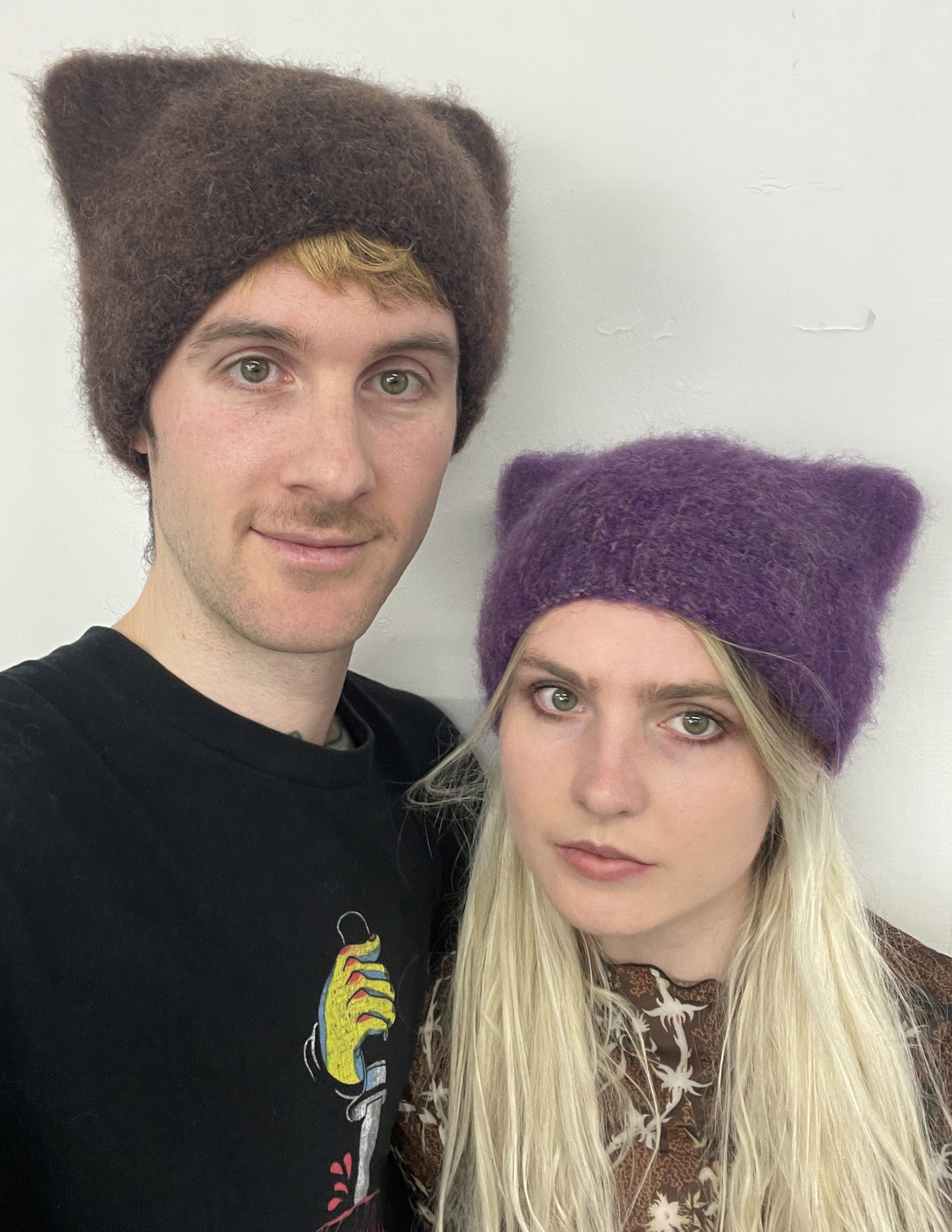
In a world where ideas are exchanged at the swipe of a thumb, it’s hard to determine who is providing inspiration, and who is receiving it. Enter KNWLS, a self-described Instagram brand who’s quintessential mesh prints and Jetson-like silhouettes have been spotted on countless celebrities from Bella Hadid to Rihanna, triggering a tidal wave of fast fashion knock-offs that mirror the brand’s lingerie-inspired looks. Yet founders Charlotte Knowles and Alexandre Arsenault aren’t too worried about originality. Instead, the CSM graduates have embraced being a part of a new aesthetic movement that takes inspiration from quintessential ’90s designers like Jean Paul Gaultier, Roberto Cavalli, and Dolce & Gabbana. “We were the first generation of people who discovered fashion through the internet,” Arsenault tells me.
“It’s part of the nostalgia element,” Knowles adds. “But I wouldn’t say it’s a revival.”
Call it e-girl fashion or scene-girl kitsch (as the brand does in their latest press release), whatever the term, KNWLS has managed to capture the attention of a generation that’s being pulled in a million directions, as well as that of fashion giants like LVMH, who recently announced that the duo advanced to their 2022 prize finals. To find out more about the designers’ mission, we spoke to KNWLS ahead of the release of Precious—an anime-inspired Fall 2022 collection launching today with a look book and virtual presentation by the filmmaker and photographer Jordan Hemingway.
———
TAYLORE SCARABELLI: How are you feeling about the new collection? Are you excited to get it out there?
ALEXANDRE ARSENAULT: Yeah. We finished it in February and did sales in February so it’s just been dragging on and on. We’re excited to finally put it out.
SCARABELLI: What was the inspiration behind it? Why did you call it Precious?
ARSENAULT: There were so many annoying things happening with the business side of the brand and we weren’t really enjoying the fun stuff because of it. So we were like, “Let’s create this little chaotic thing.”
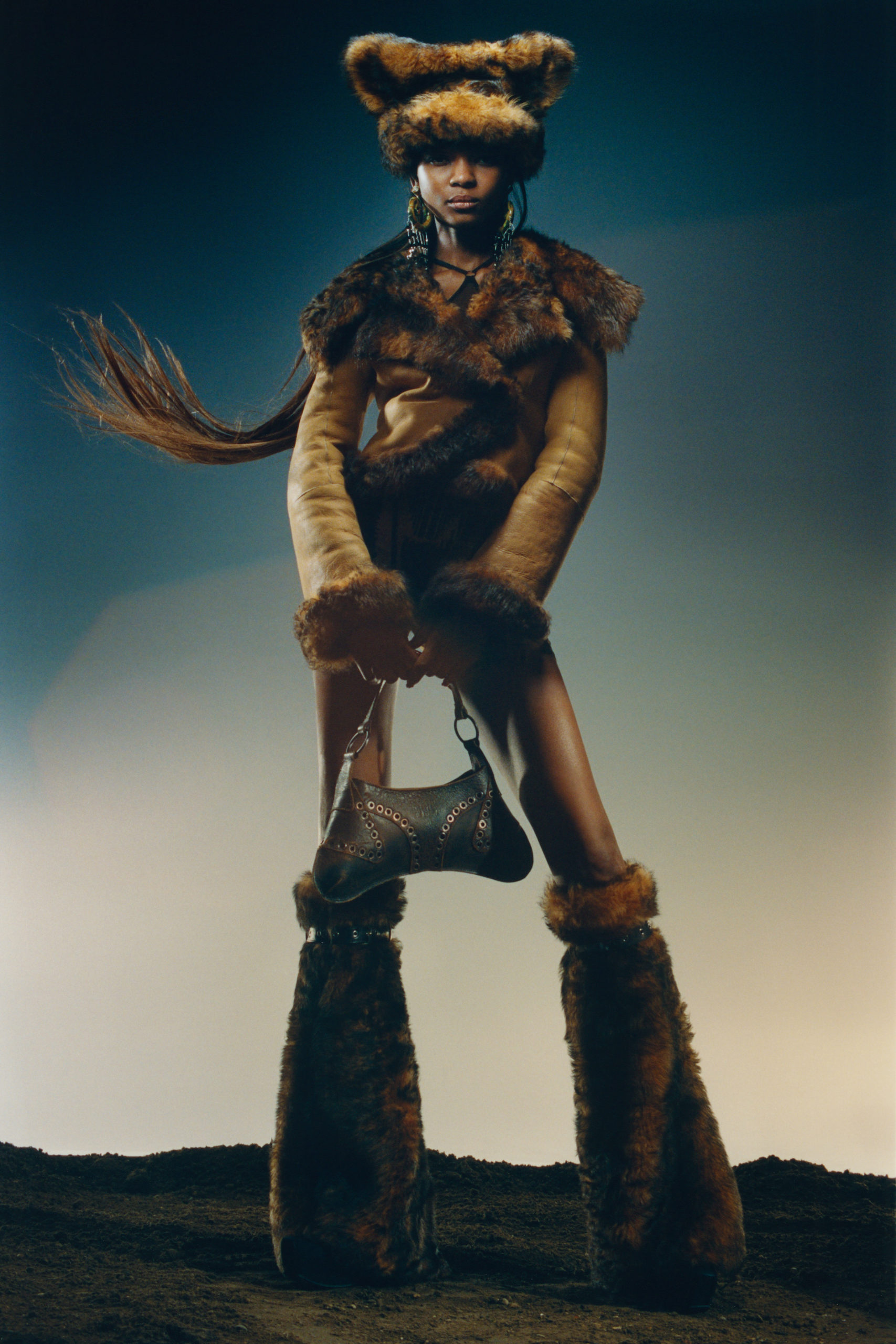
CHARLOTTE KNOWLES: It’s always a bit eclectic because it’s a mixture of things that we’re both interested in and we’re quite different people. For this collection we were looking at Harajuku style in FRUiTS magazine and we were particularly inspired by the silhouettes from that—the top-heavy, poofy, cozy stuff, with like, big leg warmers, printed tights, and clunky boots.
SCARABELLI: It’s very raver to me. Are you guys ravers?
ARSENAULT: We used to be [laughs], we’re too old now, the energy isn’t there anymore.
KNOWLES: I definitely went through a nurave phase.
SCARABELLI: So it’s nostalgic for you.
KNOWLES: I think it always is.
SCARABELLI: This winter I saw so many kids wearing animal hats like the one you have on right now—which reminds me of the pink pussy hats we saw in America during the Trump-era. I’m wondering where you think this animal hat trend comes from? Why is everyone into these plushy, feel-good objects?
ARSENAULT: I think there’s a huge move towards digital culture. There’s so many more video game players and girls who are interested in that world. People like Grimes really pioneered that movement.
KNOWLES: Alex has been wanting to do a cat hat for ages and I’ve always been on the fence. We’d never found the right shape or the right fabrication. But I think that they work perfectly with the brushed mohair.
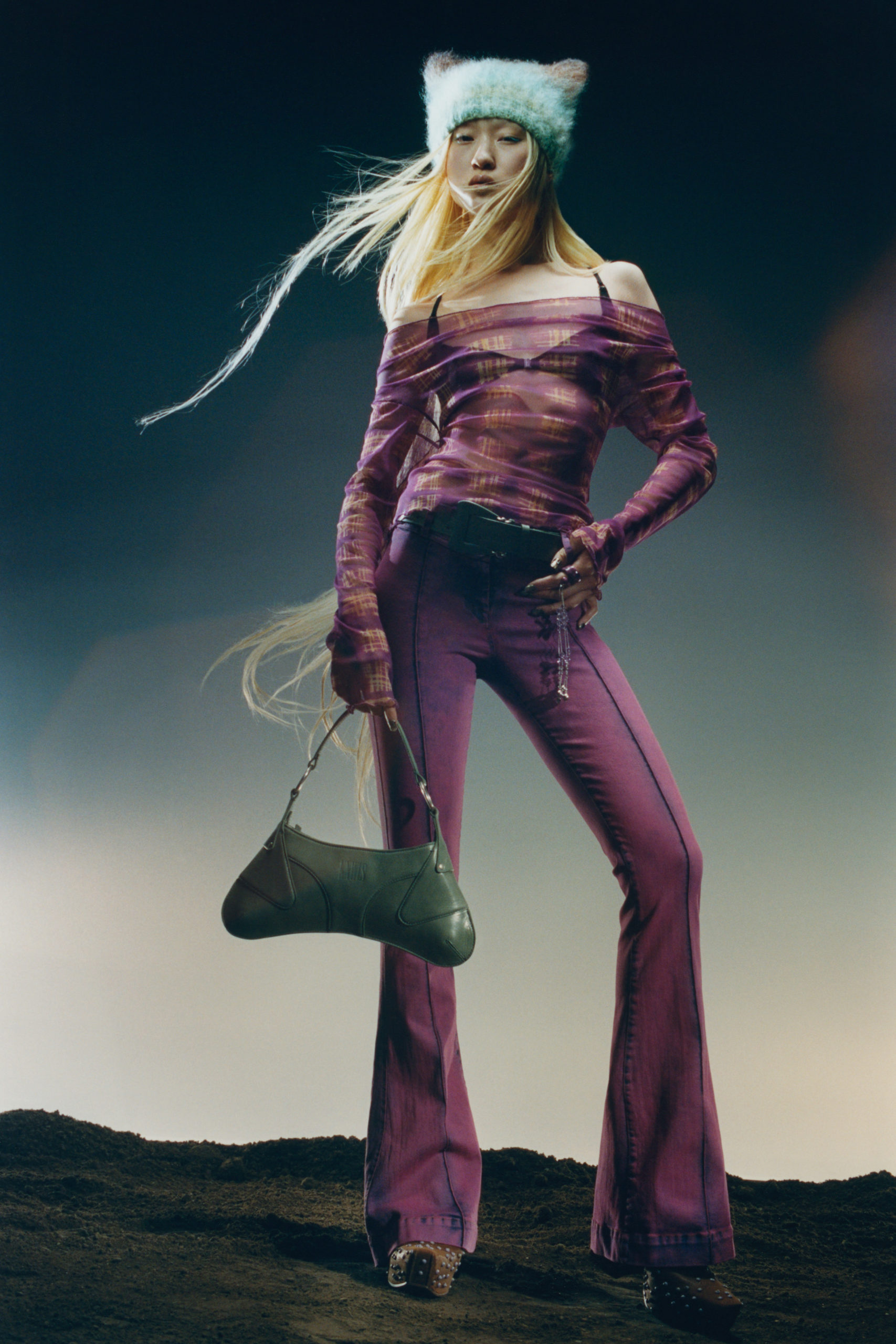
SCARABELLI: It’s interesting what you said about the hats coming from video game culture, like something an avatar would wear. Are you guys interested in the metaverse at all? Are you doing any digital collaborations?
KNOWLES: We’ve been in talks with someone about it, but it hasn’t really taken off yet.
ARSENAULT: I’ve always really been into Japanese anime and video games so it’s just been part of how we think about things. As for the metaverse, we believe in it, but I feel like it’s too early and people are trying to jump the gun.
KNOWLES: I was never really into gaming so I find it especially hard to connect to. Once it’s developed to a point where people who aren’t really interested in that world can feel like they’re part of it then I think it will be quite interesting.
SCARABELLI: I think you guys are tapped into the metaverse in a different way—you’re in conversation with digital trends. I’m curious how you feel about being called an “Instagram brand”?
ARSENAULT: That’s funny, we were just on another call before this and we said, “Yeah, we’re basically an Instagram brand.”
KNOWLES: Our brand was born on Instagram. When we left CSM we were sort of the underdogs. Neither of us were in the press show and we both felt like we really had to fight for our position. After that, I just started posting my graduate collection on my personal Instagram and it took off. We gained a lot of followers, we had a lot of celebrities endorsing the brand, and it just snowballed from there.
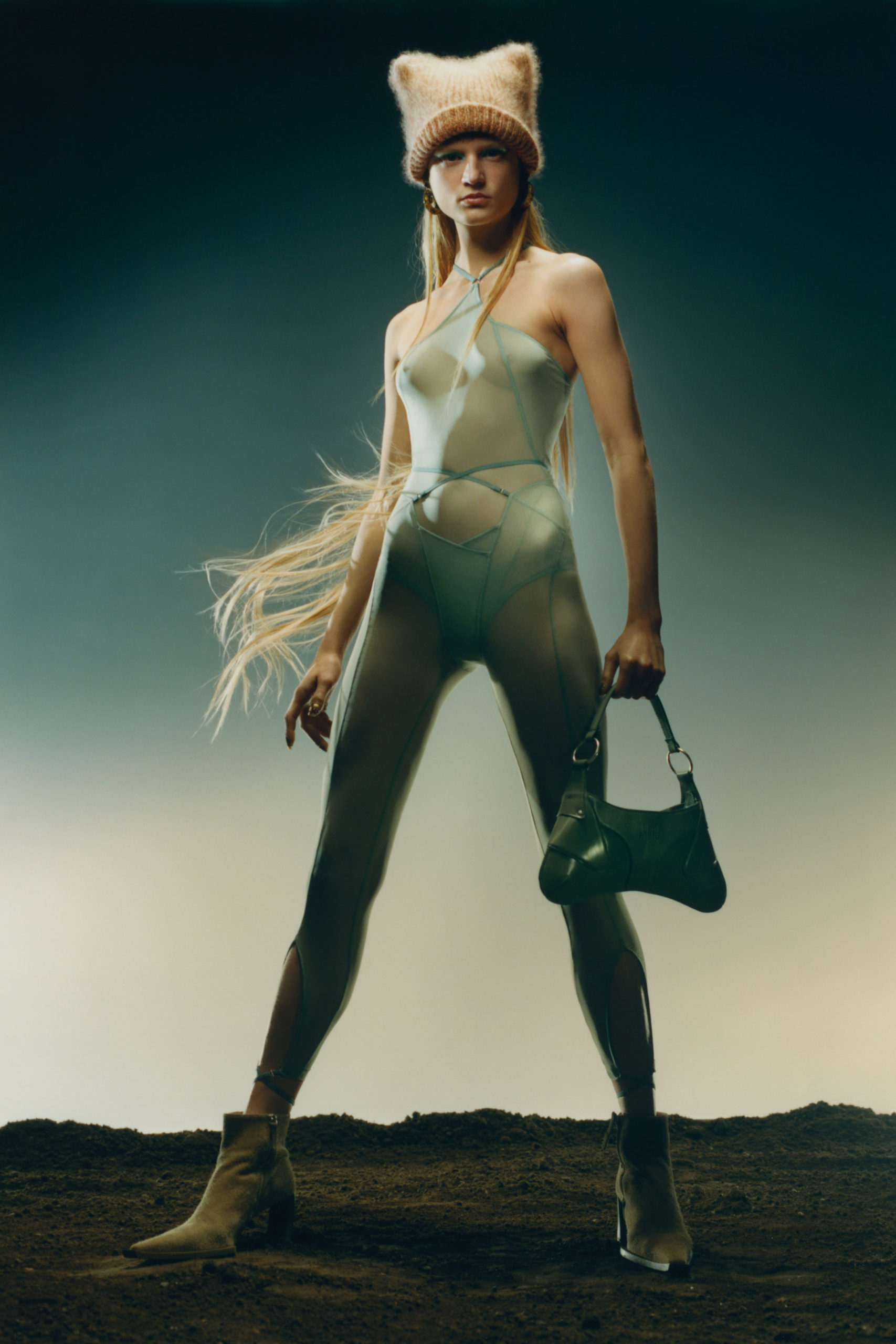
ARSENAULT: We saw that there was a new breed of girls on Instagram who had a different perspective on how they wanted to dress, similar to the world we were creating already.
KNOWLES: We were making revealing things during the tail-end of the me-too movement. I think some people found it slightly jarring. But the people who really embraced it wanted to feel empowered and show off their bodies.
ARSENAULT: With Instagram, you’re able to control how you present yourself wearing those clothes, which gives you an extra layer of control and power. It definitely boosted the movement towards sexy again.
SCARABELLI: I think Instagram can be a bit of a double-edged sword though, especially when you have celebrities like Kylie Jenner wearing your clothing because as soon as they wear it, it gets knocked off. I’m sure that’s happened a lot to you guys. How do you feel about fast-fashion knock-offs?
KNOWLES: In some ways it’s a form of flattery. The only time that we get annoyed by it is when people tag us wearing something that’s not our product. We take so much pride in our product development and making sure that things are like super precisely finished. When you see the knockoffs, they look like someone got the garment scanned and printed it on a crappy base or something.
ARSENAULT: Now that there’s a streamlined channel of communication between buyers, press, brands, and consumers, the attention is split so much more. Anyone can start a brand that looks like another brand. When we started, no one else was really doing what we were doing, and then suddenly all of these brands with a similar aesthetic popped up. That’s really divided the attention of the consumer, because even if the brand next to you is on a much less elevated level, there’s still someone who’s going to look at their stuff instead of looking at yours. Instagram has benefits because it’s made us recognized, but keeping that attention is much more difficult now.
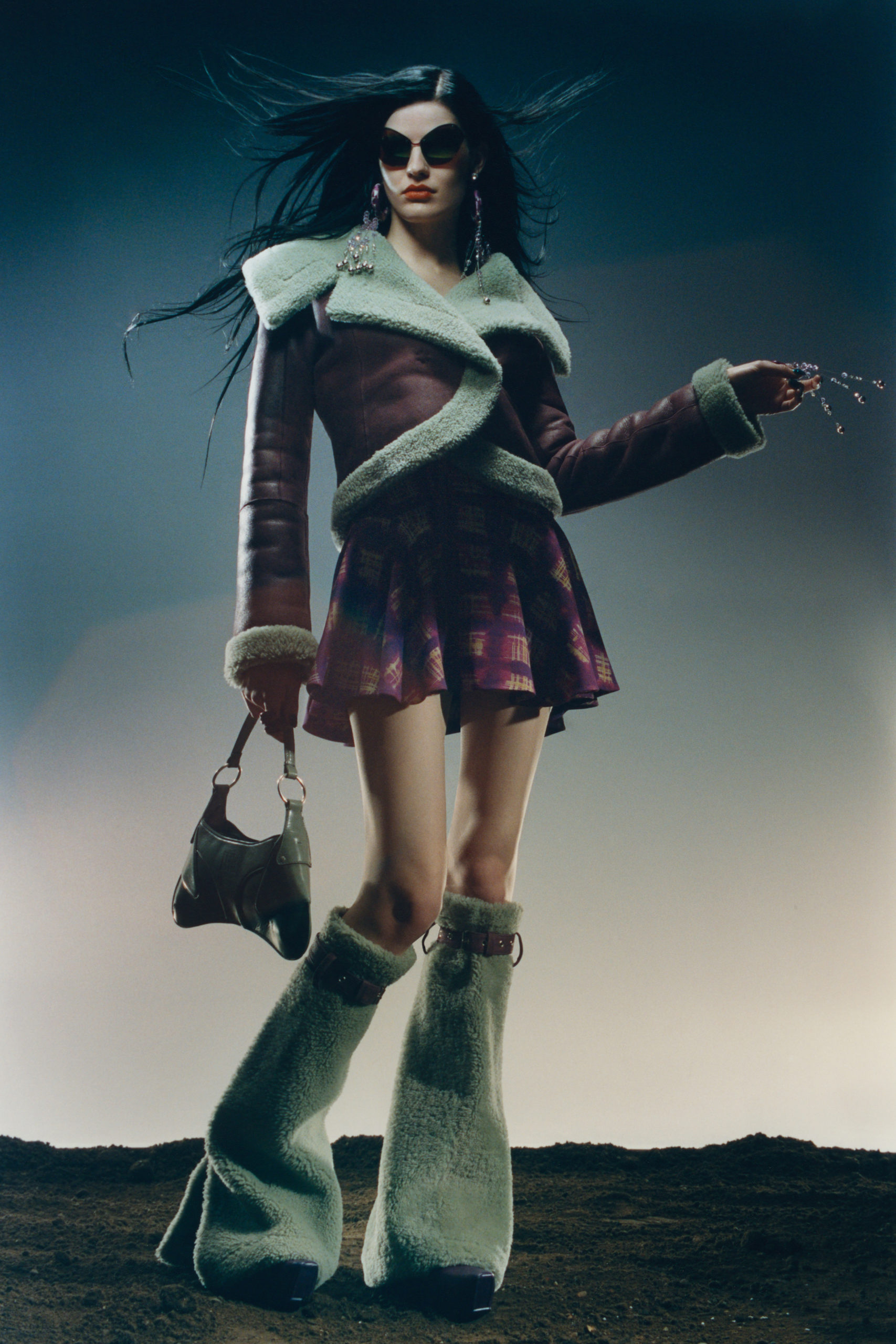
SCARABELLI: There’s a little bit of false hope there as well. Just because you have a ton of Instagram followers doesn’t mean you’re necessarily going to have a successful business, earning attention is a lot different from building a real brand. Have you guys struggled at all with that?
ARSENAULT: Yeah. We grew up pretty fast as a brand. We were super lucky because Charlotte’s mom is really involved in the company and she has a good business acumen—she helps us with a lot of the technical things. But obviously, fashion is a super different business model.
KNOWLES: It’s like the most insane business model ever [Laughs].
ARSENAULT: Your actual products are not really your product, your product is your brand’s reputation and your brand’s image. So what you’re trying to inflate is the value of this one thing by selling products and creating content.
SCARABELLI: How has your experience been with the LVMH prize?
KNOWLES: It’s been really fun. Initially we were really nervous about it because we’re not the most network-y people. We were scared that we were just gonna get grilled non-stop for two days, but it wasn’t really like that at all. It was a very friendly environment, and all the other designers were so lovely. We were very surprised to be in the final and we’re really looking forward to going back and seeing what happens.
SCARABELLI: How do you guys work together? What’s your design process?
ARSENAULT: Lately, I’ve been doing all the boring stuff, because there’s more and more business things to deal with. Charlotte deals with a lot of the more fun stuff.
KNOWLES: Design-wise, Alex does a lot of the outsourcing. He’s quite good at product development. I do a lot of stuff on the stand. I’ll drape things or find reference garments and cut them up—I’m quite sporadic in the way that I design. Alex helps me refine stuff a little bit. And then the research we both just do together.
ARSENAULT: We’re not really the designers who are going to do the thematic thing, we just put a little world together for the season.
KNOWLES: I hate the idea of drawing a collection. I prefer working on individual pieces and then styling them together and figuring out what layers nicely and what creates new shapes. Alex is such a Virgo, and he loves having a plan, whereas I love happy mistakes and things evolving over time.
SCARABELLI: What’s your sign?
KNOWLES: I’m a leo, but I’m not that much of a leo.
ARSENAULT: She’s more like a cat than a lion.
KNOWLES: I’m quite stubborn though.
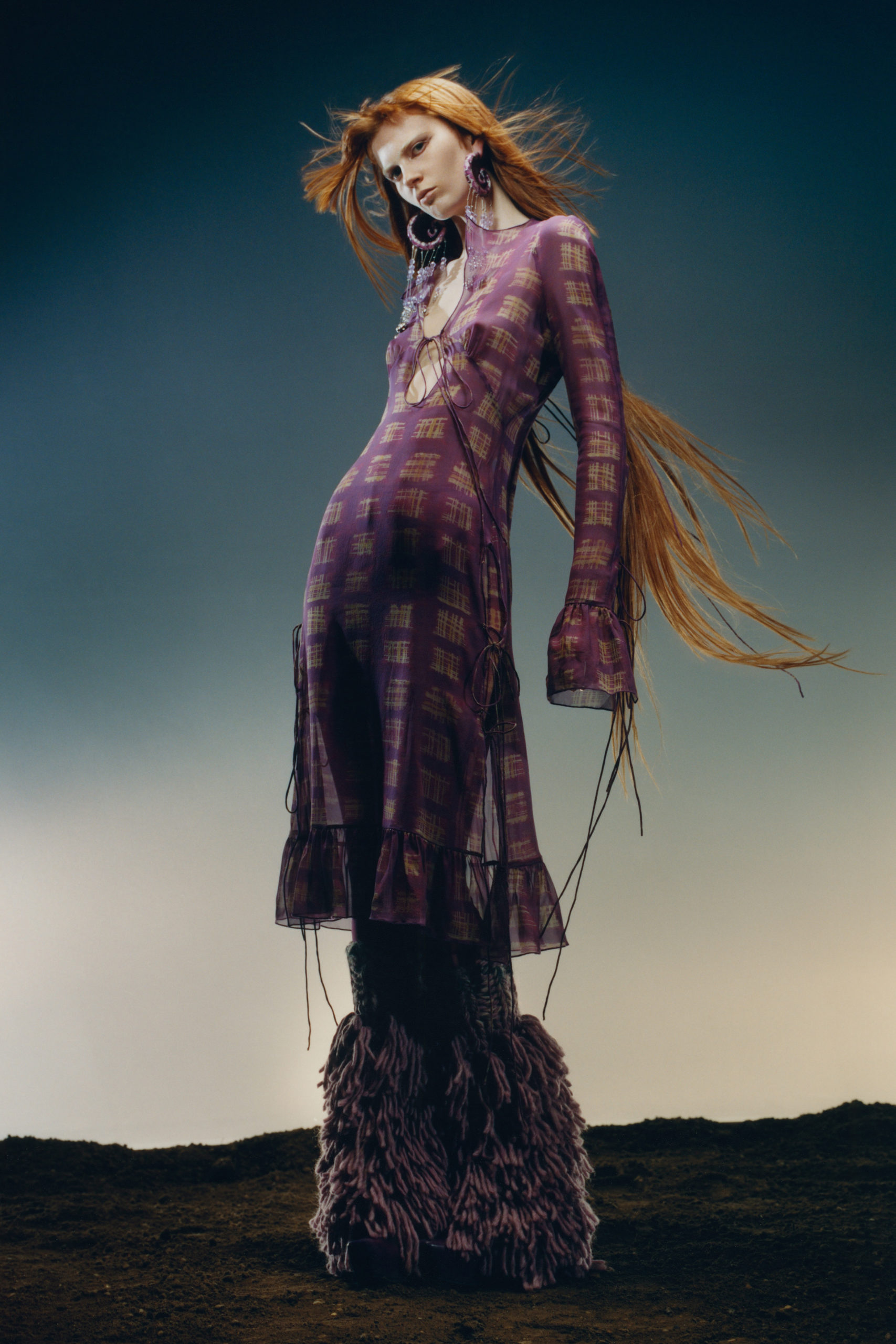
SCARABELLI: In your collection notes you call the looks “scene-girl kitsch.” I’ve seen a similar aesthetic making the rounds on Instagram and within New York-based collectives like Lucky Jewel and Cafe Forgot. Can you describe who the scene-girl is in 2022?
ARSENAULT: Back then it was just really an aesthetic to describe the girls with the big bags and the stripe-y leg warmers. It’s free and experimental and anti-establishment. It’s a bit like, “I don’t give a fuck.”
KNOWLES: We mixed it in with our vision of all women, which is always a bit more dark and edgy and untouchable.
ARSENAULT: The scene-girl in 2022 is hopefully a KNWLS girl.
SCARABELLI: The collection is a little bit post-apocalyptic or something. It’s giving, like, Mad Max.
KNOWLES: Yeah, that was definitely the energy that we wanted. Last season, the collection was about escapism in this post-apocalyptic world. We continued a bit with that, especially with the set and everything that Jordan helped us create.
ARSENAULT: And we are trying to survive the apocalypse, aren’t we? With COVID, and everything else that’s going on in the world.
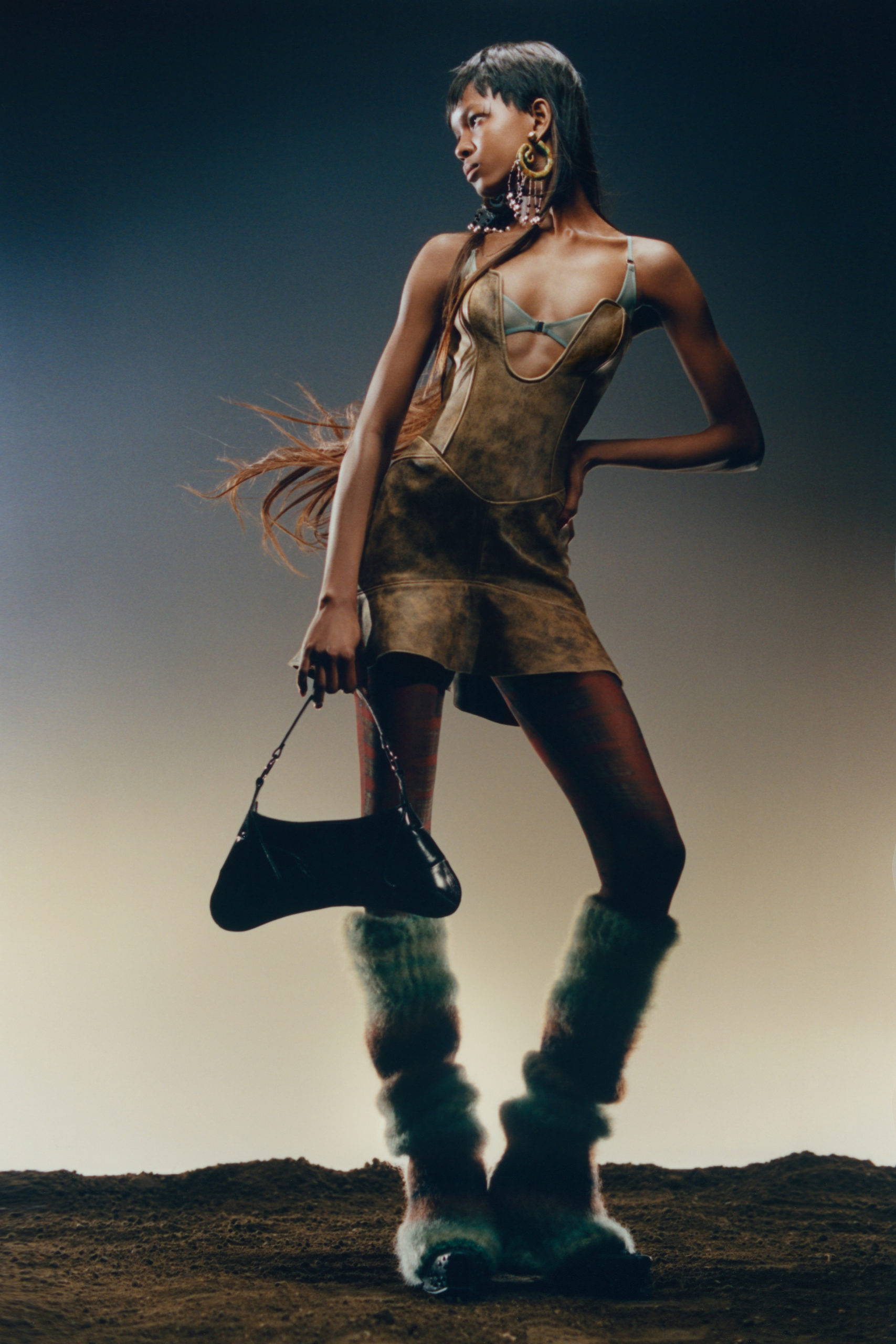
SCARABELLI: Speaking of apocalyptic, how do you guys feel about sustainability in fashion? I know it’s a bit of an oxymoron.
ARSENAULT: For us it’s always about how things are sourced. A brand our size doesn’t have an actual impact on the environment, our trace is very small, and we do everything to make sure that our footprint is even smaller by working with certified mills, or choosing fabric that is going to be a bit more expensive, but better for the environment. But it’s also about providing quality and creating a product that was made to last or to be resold on the second-hand market. Treating your employees well is also a big part of sustainability that people don’t really talk about. All of this is obviously a big part of our inner language, but we would never greenwash the brand by promoting it as a sustainable brand, because that’s taking the piss and misinforming people. There’s a lot of that going around, and I think, like with every problem, education is a solution.
SCARABELLI: But ultimately you’re an Instagram brand, and a lot of what you put out is very trendy. Are you thinking about whether or not these designs are lasting? Because unfortunately we cycle through clothing and trends extremely rapidly, especially when it comes to celebrities and influencers and all of that.
ARSENAULT: I think that Instagram has definitely accelerated how much people consume clothes. But I think a lot of people who buy our clothes end up selling them on the second hand market.
KNOWLES: Especially at our price point, it’s not really like something that you’re going to buy and then chuck away.
ARSENAULT: Even if we were to become a completely sustainable brand tomorrow, there’s still going to be companies like SHEIN selling 100 billion dollars of clothes that are being sold for, like, five quid a piece. What really needs to change is those monster companies that are basically destroying the planet.


